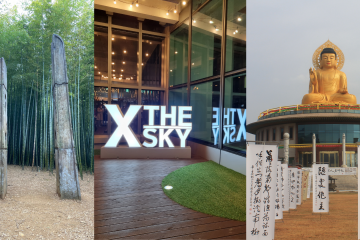Hallyu and Korean Mythology

Table of Contents
The “Jade Rabbit”
It is commonly believed that there is a rabbit on the moon who sits on top of the surface and uses a pestle to pound for rice cakes. The “Jade Rabbit” is actually an important symbol that represents the mid-autumn festival of Chuseok. In Hallyu, BTS pays tribute to the “Jade Rabbit” in their music video for “IDOL.”
The “Gumiho”
Also known as the nine-tail-fox, the “Gumiho” is a fox-like creature that transforms into a beautiful woman. These creatures use their superior physical appearance to lure men in so they can devour their livers. Many Korean dramas tell the story of “Gumihos” on their journeys to become human by not eating human flesh for 1000 days.
The “Dokkaebi”
Often referred to as “Korean goblins,” the “Dokkaebi” are tricksters because they like to play pranks and strike fears into the heart of people. They do this by changing their appearance. This Korean mythology gained prominence in Hallyu due to the success of the Koran drama “Guardian: The Lonely and Great God.” The drama follows the immortal goblin as he tries to find his bride.
The “Gwisin”
A female ghost with long black hair who haunts uninhabited spaces. She typically wears white clothing that covers her entire body. A famous appearance by the “Gwisin” is in the horror game F.E.A.R. Alma is the “Gwisin” antagonist of the game and she is considered to be one of the most iconic video game villains.
The “Mul Gwisin”
With a similar description to the “Gwisin”, the Korean mythology “Mul Gwisin” is a female ghost that haunts the water. This is usually because of an accidental drowning. These ghosts are not aware that they are dead, so they usually seek out swimmers to help, often time, bringing the swimmer down with them. In Hallyu pop culture, the movie “Dead Friend” referenced the “mul gwisin,” where a group of friends attempts to contact a dead spirit.
Let us know down in the comments how many of these Korean mythologies you’ve heard of.







